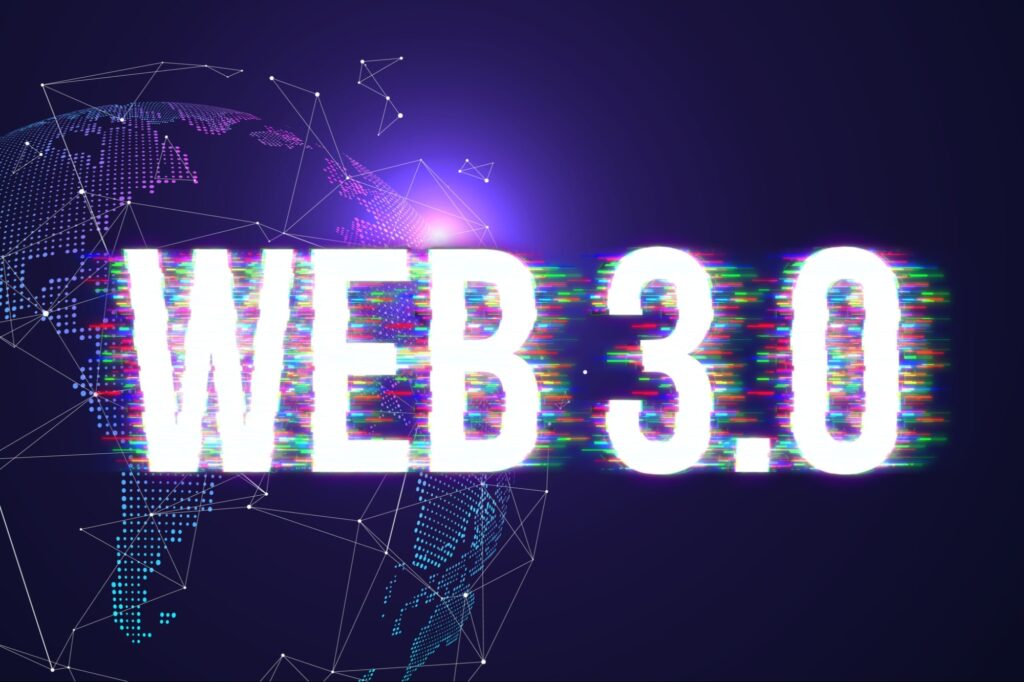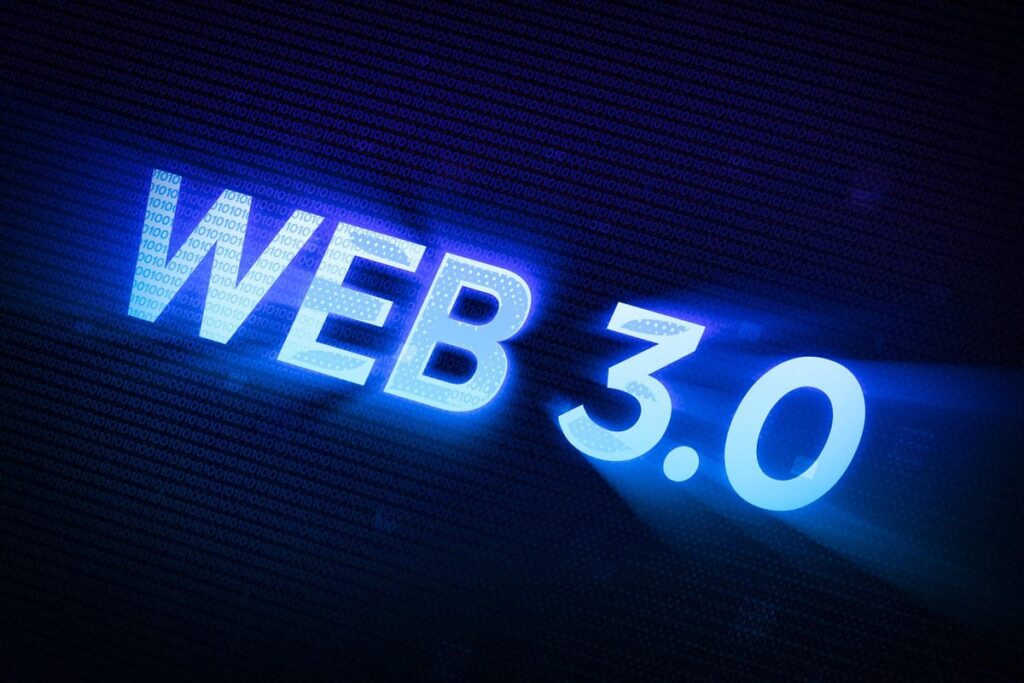Is it a genuine revolution, a Ponzi scam, or snake oil? Web3 (also known as Web 3.0) is another well-liked subject on the list of “let’s debate the future of technology” topics, along with the Metaverse and the peculiar realm of NFT art. What is Web3 exactly? How does it function?
How Does Web3 Function and What Is It?
The upcoming version of the Web is called Web3 (or Web 3.0). Since Web3 is still only a concept, various, frequently opposing opinions exist on what it should look like. Numerous businesses have emerged as industry leaders in web3.0. Therefore, Hire the best Web3 Development Company for your business. Some claim that the technology is now available and that we have already dipped a toe (or, more precisely, a pinky) in the water.
But let’s look at what we know so far first.
The term “Web3” was first used in 2014 by the programmer and Ethereum co-creator Gavin Wood. Wood compared the current Web 2.0 infrastructure to cities and villages (platforms) where people hang around and interact with one another in a 2021 interview with Wired.
External agencies and the technology companies that first made these exchanges possible, including financial transactions, are in charge of regulating them. These include significant social networks and monetary institutions, like central banks, that control money movement.

There’s a catch, though. It is impossible to monitor and maintain the expanding Web due to the technology’s rapid progress, including blockchain and artificial intelligence (described further below).
Web3 proposes a collection of cutting-edge technologies, like open-source software and blockchain, to eliminate intermediaries rather than establish a flood of new rules. Web3 enables the Web to self-regulate by returning power “to the people.”
The main benefit touted for Web3 is that it will “democratise” or “decentralise” the Web. On paper, it moves the balance of power away from corporations and toward content producers (read: regular users).
Ironically, significant corporations like Meta and YouTube are keen to join the Web3 bandwagon. Who wouldn’t? According to Susan Wojcicki of YouTube, the company aims to embrace Web3 and NFTs to empower artists.
What’s Under the Hood of Web3?
Blockchain
Blockchain is necessary for cryptocurrencies to exist, and Web3 is not possible without cryptocurrencies. Blockchain is a secure and private way to group online purchases into “blocks”; it can also hold other kinds of data.
What part does the Web3 revolution’s blockchain technology play? Blockchain decentralizes the Internet and an expanding number of industries by enabling users to exchange money (cryptocurrencies) and digital assets (non-fungible tokens) without the need for a mediator or outside oversight.
Do you know what non-fungible tokens (NFTs) are?
Data blocks known as NFTs are stored on a blockchain. Unlike Bitcoin and Ethereum, NFTs are more like digital bonds or works of fine art. They’re unique, come in different shapes and sizes, and cost up to $200,000 for the Bored Ape Yacht Club monkeys.
Decentralization
Think about obtaining a stock photo from a website. You would need to perform a Google search to find the file (one middleman), sign up for the service (another middleman), and then pay the creator through a payment processor (déjà, vu anyone?).
In Web3 reality, the artist would retain ownership of the image and all rights. The artist might then upload the picture as an NFT, making it immediately accessible to everyone using the Internet. You could find the file and make a direct payment to the author without using an intermediary.
The blockchain decentralizes human-human interactions in a variety of other ways as well. We can go one step farther by removing proxies from other conservative companies. In addition to banking, blockchain is already being tested in the real estate and healthcare industries.
Knowledge Web
Web 3.0 or Web 3.0? Both terms are widely used when discussing the upcoming Web iteration. They cannot, however, be used interchangeably. In reality, Web 3.0 is the idea of a “Semantic Web,” which would let computers “understand” and interpret data better.
Tim Berners-Lee developed the “Semantic Web,” built on logical connections between different pieces of data. A search engine driven by the Semantic Web could interpret queries based on context to provide better search results (metadata).
The Metaverse and the “Spatial Layer”
We cannot discuss Web3 without mentioning the Metaverse. You can read our earlier piece on the matter here if you haven’t already. tl;dr The Metaverse merges the physical and virtual worlds utilizing cutting-edge and traditional technologies.
Many businesses are vying to produce the finished Metaverse, which is still under development. The Metaverse’s goal is to bring the physical and digital worlds together via the use of technology like virtual reality (VR) and augmented reality (AR), in addition to producing money (AR).
The “spatial layer” that the Metaverse offers could one day be a fundamental component of Web3. According to Deloitte, the spatial interaction layer would use devices like smart glasses and voice assistants to enable users to interact with “contextual, real-time information.”
These 5 Web3 Trends are revolutionizing the Real Estate Industry.

Properties with Tokens
Decentralized finance (DeFi) services are not the same as those of your great bank. Grandfathers are driven by a network of blockchains, oracles, and smart contracts. DeFi can provide more valuable and seamless service, opening the door for previously unimaginable innovations, especially in underserved places.
Real estate is tokenized on CitaDao.io, a decentralized infrastructure platform. To solve liquidity, access restrictions, and lack of composability, they are building interoperability with other DeFi applications. Communities can invest in real-world assets with continual liquidity supported by an Automated Market Maker algorithm to diversify their on-chain portfolios and generate consistent yields.
NFTs Acts
While non-fungible tokens (NFTs) are currently in vogue, their applications go beyond musician fan groups and profile pictures. Property ownership with NFTs is reflected in the patented technology and legal framework of Propy. The legal documents are accessible thanks to a purchase record posted to the blockchain. As a result, buying prices are decreased, and the procedure takes only a few minutes.
On the NFT Marketplace of Propy, purchases are made using the USDC token. Since USDC is a “stablecoin,” it is less volatile than other cryptocurrencies. After receiving 3,000 offers, Propy sold a Florida property for 210 ETH (about $653,163 at the time), completing its first real estate-backed NFT transaction.
Fractional investment
Real estate has historically been a less accessible investment option for lower-income people due to its lack of liquidity. At the same time, benefiting from global real estate market fluctuations has traditionally been a privilege reserved for the wealthiest people. By using NFTs to offer fractional investing with lots starting at $50, RealT is seeking to overcome these difficulties.
By collateralizing holdings, RealT’s most recent partnership with DeFI giant AAVE opens up a brand-new market for users to borrow stablecoins. A democratizing aspect that has the potential to give real estate a stock market-like trading velocity is the combination of blockchain’s quick settlement times and low transaction fees.
Mortgages in Bitcoin
A fintech company called Milo claims to be the first to provide the first “crypto mortgage” in the world, letting customers use Bitcoin as collateral to be approved for a 30-year loan. When the ratio reaches 30%, Milo will sell the assets and keep the cash in US dollars.
The Michigan-based United Wholesale Mortgage said in August that it would start accepting bitcoin from its borrowers as part of a pilot program, which is a sign of the rising acceptability of cryptocurrencies as portfolio assets. The second-biggest mortgage lender in the US started with Bitcoin and is currently looking into other assets like Ethereum.
Peer-to-peer transaction marketplaces
The median home sale price in the United States in 2021 was $346,900, up 16.9% from the previous year and the highest on record going back to 1999, according to the National Association of Realtors. Like stocks, investors can put money into a property’s potential future growth and build a portfolio of real estate assets.
Final Thoughts
The Web3 bubble is full of jargon and unanswered questions. Do we need a new version of the Web right now? Is Web 2.0 merely an issue of better leadership and modern legislation?
One thing is sure. Web3 pioneers will need a few more years to fully develop the idea and show how it can be used in a way that makes sense to typical Web users. Will Web3 continue to exist for a while? Although the judgment is not yet in, both sides seem to have good points.
The best NFT game development services in the USA is RisingMax Inc. can help you develop NFT like games or web3 development. We think that asynchronous and remote work will be the norm in the future. Furthermore, technologies like blockchain and the Metaverse open new prospects for far-flung businesses.
Virtual conference rooms, haptic digital whiteboards, and VR brainstorming? Although many businesses are developing the necessary technologies, we still have time to wait until the experience is “as good as real life.”
It’s challenging to imagine a world without centralized hubs to support remote communication. Being social creatures, people naturally congregate in groups to work, converse, and have fun. Can Web3 continue to be social? Not now; only time will tell!

